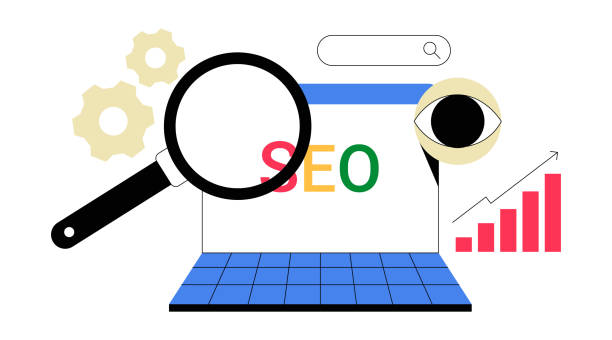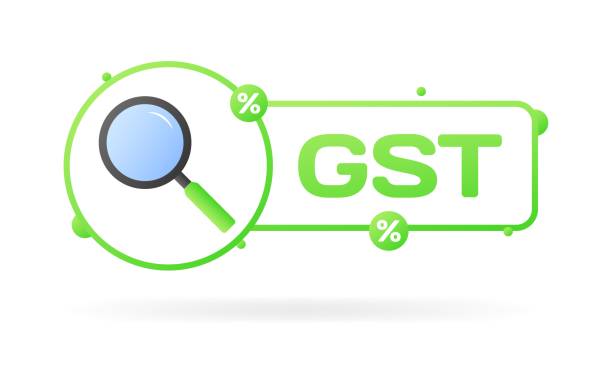What is SEO and why is it essential for your business?

What is SEO and why is it essential for your business?
#SEO, or Search Engine Optimization, is a process that optimizes your website for search engines like Google, Yahoo, and Bing to achieve a higher ranking in search results.
This means that when users search for keywords related to your business, your website appears on the first pages of search results.
Why is SEO essential for your business?
Increased Organic Traffic: SEO helps you attract more organic (unpaid) traffic to your website.
This traffic comes from users actively looking for the products or services you offer.
Increased Credibility and Trust: Websites that rank high in search results are generally considered more credible and trustworthy.
With SEO, you can enhance your brand’s credibility.
Cost Savings: Compared to paid advertising, SEO is a more cost-effective marketing strategy.
Although SEO requires time and effort, its long-term results can be highly valuable.
Targeting the Target Audience: SEO allows you to target specific keywords that your target audience uses.
This helps you attract more relevant traffic to your website.
Improved User Experience: SEO is not limited to optimizing for search engines.
It also involves improving your website’s user experience.
A fast website, user-friendly design, and high-quality content are more attractive to both users and search engines.
For SEO to be done correctly, various factors must be considered.
Ultimately, SEO is a long-term investment that can help you grow your business and achieve your marketing goals.
This process requires expertise and sufficient knowledge, so it’s best to seek help from an SEO specialist.
Is your online sales not meeting expectations? With Rasawweb, solve low sales and poor user experience permanently!
✅ Increase visitor-to-customer conversion rate
✅ Create an enjoyable user experience and increase customer trust
⚡ Act now for a free consultation!
Keyword Research – How to Find the Right Keywords?

Keyword Research – How to Find the Right Keywords?
Keyword research is one of the most important steps in SEO.
Without keyword research, you cannot understand what your target audience is searching for and how to optimize your content.
Keyword Research Tools:
Google Keyword Planner: A free tool from Google that allows you to find keywords related to your business and see their search volume.
SEMrush: A paid tool that provides comprehensive information about keywords, competitors, and website rankings.
Ahrefs: Another paid tool that offers similar features to SEMrush and helps you analyze your website’s backlinks.
LongTailPro: A paid tool that helps you find long-tail and specific keywords.
Keyword Research Steps:
- Prepare a list of initial keywords: Start with a list of core keywords relevant to your business.
For example, if you have an online shoe store, your initial keywords might include “shoes”, “sports shoes”, “women’s shoes”, and “men’s shoes”. - Use keyword research tools: Use keyword research tools to find more relevant keywords and see their search volume.
- Competitor analysis: Examine what keywords your competitors are using.
This helps you discover new keywords you hadn’t thought of before. - Choose appropriate keywords: Select keywords that are both relevant to your business and have a decent search volume.
Also, consider the competition level for each keyword.
Types of Keywords:
Short-tail keywords: Keywords that usually consist of one or two words.
Like “shoes” or “SEO”.
Long-tail keywords: Phrases that usually consist of three or more words.
Like “buy men’s sports shoes” or “SEO tutorial for beginners”.
Using both types of keywords is essential in your SEO strategy.
On-Page SEO – Optimizing Website Content and Structure

On-Page SEO – Optimizing Website Content and Structure
On-Page SEO refers to optimizing elements within your website to improve its ranking in search results.
This includes optimizing content, website structure, title tags, and meta descriptions.
This section of SEO helps search engines better understand what your website is about and how relevant its content is to user needs.
Content Optimization:
- Using keywords in content: Naturally incorporate keywords into your text.
Avoid excessive use of keywords. - Creating high-quality and valuable content: Your content should be useful and engaging for users.
Avoid providing repetitive and low-quality information. - Image optimization: Use alt tags to describe your images.
Optimize image sizes to reduce page loading speed.
Website Structure Optimization:
- Using SEO-friendly URLs: Your URLs should be short, descriptive, and include keywords.
- Creating a proper internal linking structure: Internal links help search engines better identify your website’s pages and determine the value of different pages.
- Using heading tags (H1-H6): Use heading tags to structure your content.
The H1 tag should be the main title of the page, and H2-H6 tags should be used for subheadings.
Optimizing Title Tags and Meta Descriptions:
- Title tag: The title tag should be descriptive, engaging, and include the main keyword.
- Meta description: The meta description should be a summary of the page’s content and entice users to click on your link.
Example tables for internal optimization:
| Element | Best Practice | Description |
|---|---|---|
| Title Tag | Less than 60 characters, includes keyword | Page title in search results |
| Meta Description | Less than 160 characters, engaging and descriptive | Summary of page content |
| Heading Tags (H1-H6) | Hierarchical use, includes keywords | Content structuring |
Off-Page SEO – Building Backlinks and Increasing Authority

Off-Page SEO – Building Backlinks and Increasing Authority
Off-Page SEO refers to actions you take outside your website to improve its ranking in search results.
The most important aspect of Off-Page SEO is building backlinks.
Backlinks are links from other websites to your website.
The more high-quality backlinks your website has, the more credible and trustworthy search engines will consider it.
One of the most important SEO tips in this section is to create links with relevant websites.
Methods of Building Backlinks:
- Creating high-quality content: High-quality content naturally attracts backlinks.
If your content is valuable and useful, others will share it with their audience and link to it. - Participating in events and conferences: Attending events and conferences related to your business is an excellent opportunity to network with others and gain backlinks.
- Guest posting: Guest posting on other websites is one of the effective ways to build backlinks.
- Creating social media profiles: Social media networks can be a good source of backlinks.
- Participating in online forums and groups: Participating in online forums and groups related to your business is an excellent opportunity to share your content and get backlinks.
Factors Affecting Backlink Quality:
- Authority of the linking website: Backlinks from authoritative and high-quality websites have more value.
- Topical relevance: Backlinks from websites relevant to your website’s topic have more value.
- Link position: Links placed within the content have more value than links in the footer or sidebar.
- Number of outbound links: Websites with many outbound links usually have less value.
Off-Page SEO is a time-consuming and complex process, but it is essential for improving your website’s ranking in search results.
Is your current e-commerce website not generating the sales you expect?
Rasawweb is an expert in professional e-commerce website design!
✅ An attractive and user-friendly site aimed at increasing sales
✅ High speed and security for an ideal shopping experience⚡ Get a free consultation for online store design with Rasawweb!
Technical SEO – Optimizing Speed, Mobile-Friendliness, and Crawlability

Technical SEO – Optimizing Speed, Mobile-Friendliness, and Crawlability
Technical SEO refers to optimizing the technical aspects of your website for search engines.
This includes optimizing website speed, mobile-friendliness, and crawlability.
This section of SEO helps search engines easily find, examine, and index your website.
Website Speed Optimization:
Website speed is an important ranking factor.
Users expect websites to load quickly.
If your website is slow, users will leave it, which can harm your ranking.
Methods to Optimize Website Speed:
- Image optimization: Use small-sized images.
- Enable Gzip compression: Gzip compression can reduce the size of your website files.
- Use a CDN: A CDN (Content Delivery Network) can deliver your website content from various servers worldwide.
- Code optimization: Optimize your website code to reduce its size.
Mobile-Friendliness:
Today, most users access the internet via mobile devices.
Therefore, your website must be optimized for mobile devices.
If your website is not mobile-friendly, mobile users will leave it, which can harm your ranking.
Methods to Make Your Website Mobile-Friendly:
- Use Responsive Design: Responsive design allows your website to automatically adapt to different device screen sizes.
- Optimize speed for mobile devices: Your website speed should also be optimized for mobile devices.
- Use readable fonts: Use fonts that are easily readable on mobile devices.
Crawlability:
Search engines use robots (Crawlers) to find and index websites.
If your website is not crawlable by robots, search engines cannot find and index it.
This is one of the most important steps in performing SEO.
Methods to Improve Website Crawlability:
- Create a Sitemap: A sitemap helps search engines find all pages of your website.
- Use a robots.txt file: The robots.txt file tells search engines which pages of your website should not be crawled.
- Fix 404 errors: 404 errors are pages that no longer exist.
These errors can harm your website’s ranking.
Competitor Analysis – How to Learn from and Surpass Your Competitors?

Competitor Analysis – How to Learn from and Surpass Your Competitors?
Competitor analysis is one of the most important steps in an SEO strategy.
By analyzing competitors, you can understand what they do well and what they do wrong.
This information can help you improve your SEO strategy and outperform your competitors.
Steps for Competitor Analysis:
- Identify competitors: The first step is to identify your main competitors.
You can use search engines to find your competitors.
Search for keywords related to your business, and the websites that rank high in search results are your competitors. - Keyword analysis: Examine what keywords your competitors are using.
You can use keyword research tools to find competitor keywords. - Content analysis: Examine what type of content your competitors produce.
How high-quality is their content? What formats do they use? - Backlink analysis: Examine which websites your competitors receive backlinks from.
You can use backlink analysis tools to find competitor backlinks. - Social media analysis: Examine how your competitors are active on social media.
What type of content do they share? How many followers do they have?
Competitor Analysis Tools:
- SEMrush: A paid tool that provides comprehensive information about keywords, competitors, and website rankings.
- Ahrefs: Another paid tool that offers similar features to SEMrush and helps you analyze your website’s backlinks.
- SimilarWeb: A free tool that provides information about website traffic, traffic sources, and keywords.
By analyzing competitors, you can identify their strengths and weaknesses and learn from them.
You can also find new opportunities to improve your SEO strategy.
Local SEO – Attracting Customers from Your Geographical Area

Local SEO – Attracting Customers from Your Geographical Area
Local SEO refers to optimizing your website and online profile to attract customers from your geographical area.
If you have a local business, Local SEO is very important for you.
It helps you appear in local search results like Google Maps and Google Local Pack.
Steps for Local SEO:
- Create a Google My Business profile: Google My Business is a free profile that allows you to register your business information with Google.
This information includes your business name, address, phone number, working hours, and website. - Request customer reviews: Requesting customer reviews is one of the best ways to improve your local SEO ranking.
Positive customer reviews show Google that your business is credible and trustworthy. - Optimize your website for local keywords: Use local keywords on your website.
For example, if you have a restaurant in Tehran, your local keywords might include “restaurant in Tehran”, “best restaurants in Tehran”, and “Italian restaurants in Tehran”. - Create local links: Creating links from local websites can help improve your local SEO ranking.
- Register in local directories: Registering in local directories like Yelp and Foursquare can help increase your business’s visibility.
Local SEO is an effective marketing strategy that can help you attract more customers from your geographical area.
Using this method in SEO has a significant impact.
Measuring and Analyzing SEO Results – How to Know if SEO is Working?

Measuring and Analyzing SEO Results – How to Know if SEO is Working?
Measuring and analyzing SEO results is essential for understanding the effectiveness of your SEO strategy.
By measuring and analyzing results, you can understand which tactics are working and which are not.
This information can help you improve your SEO strategy and achieve better results.
Key Metrics for Measuring SEO Results:
- Organic traffic: Organic traffic is traffic that comes to your website from search engines.
An increase in organic traffic indicates that your SEO strategy is effective. - Keyword rankings: Check your website’s ranking for target keywords.
Improving keyword rankings indicates that your SEO strategy is effective. - Click-Through Rate (CTR): CTR is the percentage of users who click on your website’s link after seeing it in search results.
An increased CTR indicates that your title and meta description are engaging. - Bounce Rate: Bounce rate is the percentage of users who leave your website immediately after entering it.
A decreased bounce rate indicates that your content is engaging for users. - Conversion Rate: Conversion rate is the percentage of users who perform a desired action (such as purchasing a product or subscribing to a newsletter) after entering your website.
An increased conversion rate indicates that your website is effective in converting visitors into customers.
Tools for Measuring and Analyzing SEO Results:
- Google Analytics: A free tool from Google that provides comprehensive information about your website traffic.
- Google Search Console: Another free tool from Google that provides information about keyword rankings, errors, and technical issues with your website.
- SEMrush: A paid tool that provides comprehensive information about keywords, competitors, and website rankings.
- Ahrefs: Another paid tool that offers similar features to SEMrush and helps you analyze your website’s backlinks.
Example SEO Results Analysis Table:
| Metric | Goal | Result | Analysis |
|---|---|---|---|
| Organic Traffic | 20% increase | 15% increase | Needs content strategy improvement |
| Keyword Rankings | Top 10 for 5 keywords | Top 10 for 3 keywords | Needs more keyword optimization |
| Click-Through Rate (CTR) | Increase to 5% | 4% | Needs title and meta description improvement |
By measuring and analyzing SEO results, you can optimize your SEO strategy and achieve better results.
SEO is a time-consuming process and requires patience.
Don’t have a corporate website yet and missing out on online opportunities? With professional corporate website design by Rasawweb,
✅ Double your business’s credibility
✅ Attract new customers
⚡ Get a free consultation for your corporate website!
Common SEO Mistakes – What Mistakes Should We Avoid?

Common SEO Mistakes – What Mistakes Should We Avoid?
In the world of SEO, making mistakes can seriously impact your website’s ranking.
Avoiding these common mistakes can help you improve your SEO strategy and achieve better results.
Common SEO Mistakes:
- Lack of keyword research: Without keyword research, you cannot understand what your target audience is searching for.
- Keyword Stuffing: Overusing keywords in your content can harm your website’s ranking.
- Creating low-quality content: Your content should be useful and engaging for users.
Avoid providing repetitive and low-quality information. - Ignoring technical SEO: Technical SEO is very important for search engines.
If your website is not crawlable by robots, search engines cannot find and index it. - Buying backlinks: Buying backlinks is an unethical practice that can harm your website’s ranking.
- Ignoring local SEO: If you have a local business, ignoring local SEO can lead to losing many customers.
- Not measuring and analyzing results: Without measuring and analyzing results, you cannot understand whether your SEO strategy is effective.
- Copying content: Using copied content can severely harm your SEO.
By avoiding these common mistakes, you can improve your SEO strategy and achieve better results.
The Future of SEO – What Changes are Expected?

The Future of SEO – What Changes are Expected?
The world of SEO is constantly changing.
Search engine algorithms are continuously updated, and tactics that are effective today may not be effective tomorrow.
To succeed in SEO, you must always be aware of the latest changes and trends.
Future SEO Trends:
- Artificial Intelligence and Machine Learning: AI and machine learning will play a significant role in the future of SEO.
Search engines will use AI to better understand website content and provide more accurate search results. - Voice Search: Voice search is becoming increasingly popular.
To optimize your website for voice search, you should use long-tail and question-based keywords. - User Experience (UX): User experience is an important ranking factor.
Your website should be user-friendly, fast, and easy to navigate. - Video Content: Video content is becoming increasingly popular.
Producing video content can help increase your website’s traffic and ranking. - E-A-T (Expertise, Authoritativeness, Trustworthiness): E-A-T stands for Expertise, Authoritativeness, and Trustworthiness.
Search engines give better rankings to websites with high E-A-T.
To succeed in SEO in the future, you must focus on creating high-quality content, improving user experience, and optimizing your website for AI and voice search.
Doing these things will lead to better SEO.
Frequently Asked Questions
| Question | Answer |
|---|---|
| What is SEO? | SEO, or Search Engine Optimization, is a process of increasing the quality and quantity of website traffic by improving the site’s ranking in natural (organic) search engine results like Google. |
| What are the main types of SEO? | SEO is divided into three main categories: On-Page SEO, Off-Page SEO, and Technical SEO. |
| What does On-Page SEO include? | On-Page SEO includes optimizing elements within the website, such as keywords, Title Tags, Meta Descriptions, content, URL structure, images, and internal links. |
| What is Off-Page SEO? | Off-Page SEO refers to activities outside the website that help improve its ranking, such as Backlink Building, social media marketing, and Brand Mentions. |
| What is Technical SEO? | Technical SEO involves optimizing the technical aspects of a website to help search engines crawl and index it better. This includes site speed, mobile-friendliness, site structure, Sitemaps, and the Robots.txt file. |
| What role do Keywords play in SEO? | Keywords are phrases that users enter into search engines. Proper and targeted use of relevant keywords in content and site elements helps search engines understand your page’s topic and display it for relevant searches. |
| What is a Backlink and why is it important? | A backlink, or inbound link, is a link from one website to another website. Backlinks act as a “vote of confidence” from other sites for search engines and play an important role in the credibility and ranking of a site, especially if they come from authoritative sites. |
| What impact does quality content have on SEO? | High-quality, relevant, comprehensive, and unique content not only attracts and retains users but also shows search engines that your page is valuable. This helps improve rankings, reduce Bounce Rate, and increase user time on site. |
| Why is site loading speed important for SEO? | Site loading speed is an important ranking factor for Google. Faster sites provide a better user experience, have lower bounce rates, and are preferred by search engines. |
| Is SEO a one-time process? | No, SEO is a continuous and long-term process. Search engine algorithms are constantly changing, competition is increasing, and site content also needs updating. Therefore, SEO requires continuous monitoring, analysis, and optimization. |
And other services of RasaWeb advertising agency in the field of advertising
Smart Conversion Rate Optimization: A specialized service for online growth based on SEO-driven content strategy.
Smart Direct Marketing: Designed for businesses seeking digital branding through an SEO-driven content strategy.
Smart Customer Journey Map: A fast and efficient solution to increase website traffic by focusing on optimizing key pages.
Smart Brand Identity: A combination of creativity and technology to increase sales through attractive user interface design.
Smart SEO: Revolutionize user interaction with the help of real data.
And over hundreds of other services in the field of internet advertising, advertising consultation, and organizational solutions
Internet Advertising | Advertising Strategy | Advertorials
Sources
Websima SEO GuideModir TV SEO TrainingWhat is SEO and How it Works?SEO Fundamentals on Virgool
? Rasawweb Afarin, your strategic partner in the digital world. From search engine optimization to multilingual website design and content marketing, we ensure the growth and visibility of your business.
📍 Tehran, Mirdamad St., next to Central Bank, Kazeroun Jonoubi Alley, Ramin Alley, No. 6



